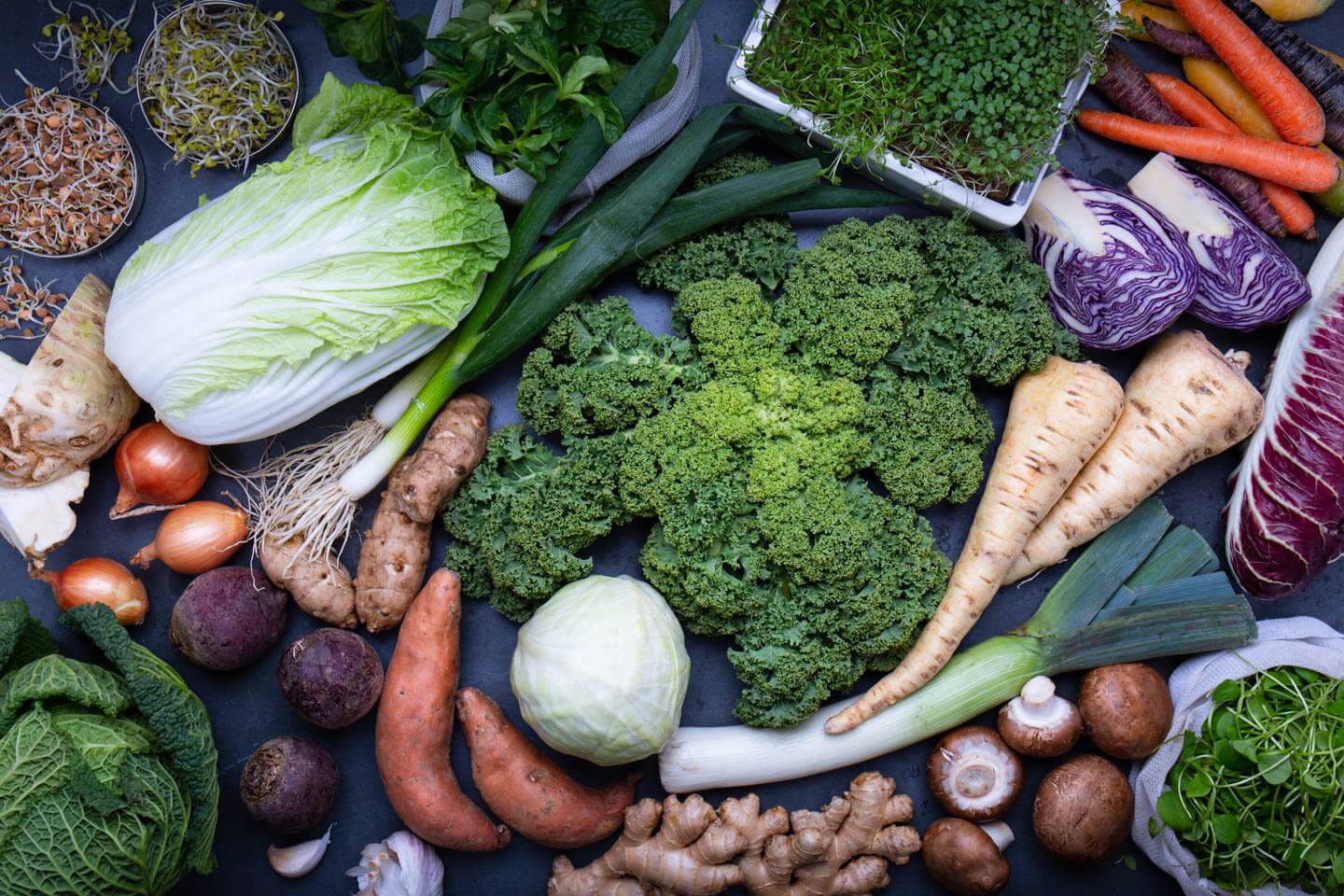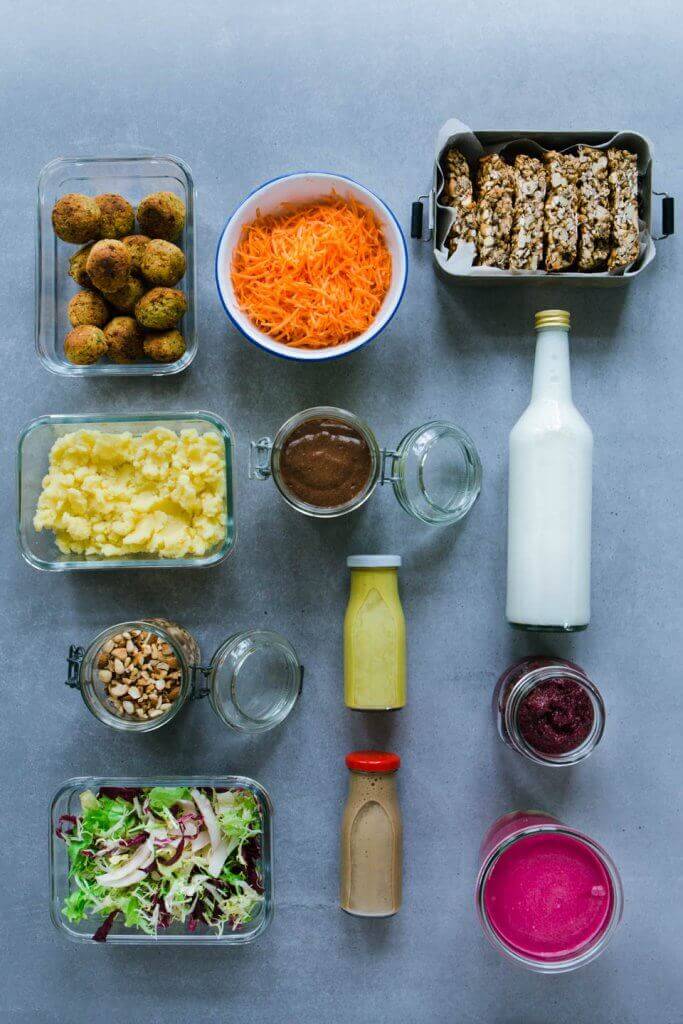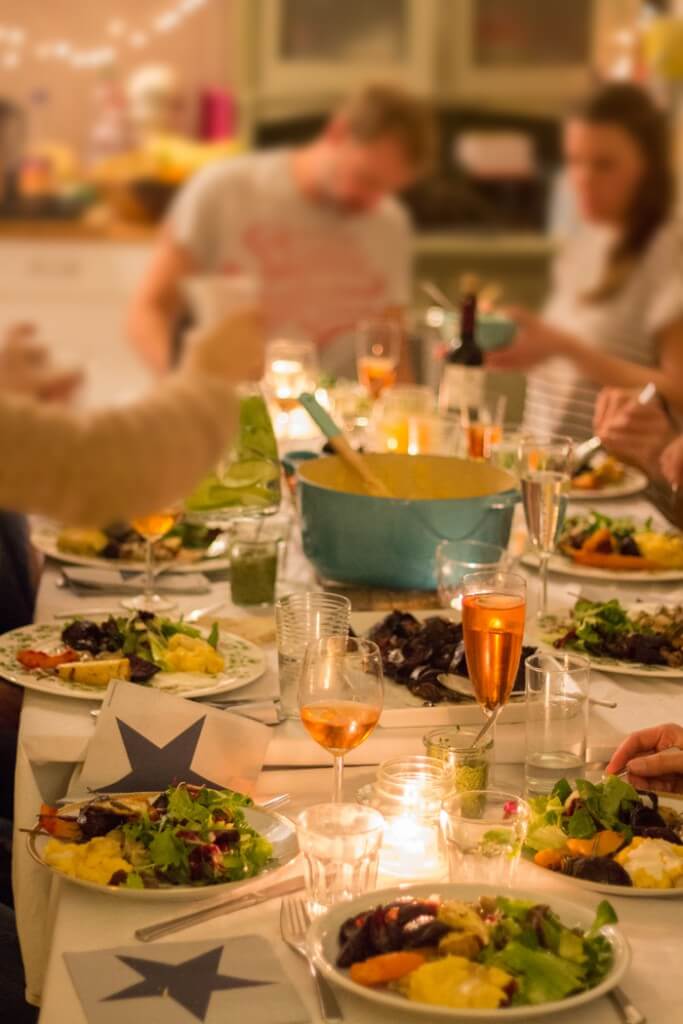1. Quality instead of mass
Good organic and sustainably grown foods are usually more expensive than conventional and mass-grown foods. When the shopping cart in the organic market is full, it hurts most of us to go to the cash register. On the contrary, at the discounter we are amazed at how full the car is – and how low the price is!
Still, less is definitely more here! Buy better food in very good quality, targeted and less! It’s amazing how we can change our consumer behavior by consciously deciding what we really need and what we do not.
Meal Prep helps to plan the purchase and to actually use all purchased food.
2. Buy seasonal fruits & vegetables
Especially in European winter this seems unthinkable for many at first. For a long time I had the feeling that I could not manage without tomatoes and grapes all year long. Looking at the seasonal calendar made me twitch a little at first. But it works – even very well!
It helped me to look at the regional farmer markets to find inspiration. Most of them also buy some additional fruit and vegetables, so you have to pay attention here, but I could see quickly: there are so many vegetables in winter, too!

3. Buy food from local producers
Seasonal and regional often goes hand in hand. Because who buys regional, must adapt to the season inevitably. However, care should be taken to ensure that regional producers produce sustainably. A cucumber from the Bavarian greenhouse in the deepest winter, is not exactly climate-friendly!
It is worth to take a look at the various organic crate suppliers. They are now available in all major cities and often in small towns and rural areas. Maybe it’s a good idea to first share a box with another household?
Dairy products are also a classic product worth looking at. Although all supermarkets now offer organic milk, it is for example often driven from northern Germany or Denmark to southern Germany and from the Alpine region in turn to northern Germany …
If you look briefly at the origin of the milk, you can quickly find a brand that sells regional and organic produced milk, without paying more.
4. Buy fresh, low- and unprocessed food
The world of convenience food has brought us a wave of processed foods to supermarkets.
The fresh, unprocessed foods are much richer in nutrients and we have, above all, control over what we eat. For example in a processed muesli mixture, there is often a lot of sugar in it, while you can make the most delicious Granola with very little effort – and then you know exactly what’s in it!
5. Change to eco-electricity
Yes, it takes a bit of time to get acquainted with the various green electricity providers and select one. But there are now several platforms that have collected a lot of information and prepared them for reading. If you know one for your country, please leave a message in the comments! There is really no reason to wait for a change!
6. Energy-efficient household appliances
For all common household appliances, much has been done in the field of energy efficiency in recent years. Refrigerators, washing machines, dishwashers … all consume significantly less power than a few years ago. However, the new acquisition makes sense from a climate-friendly perspective, if an old device is really broken and can not be repaired.
Even with small kitchen appliances, you can save electricity easily. The regular descaling of the kettle is, for example, such a small measure.
7. Start to meal prep

What is meal prep? I have created a page with many tips that will continue to grow. Just have a look!
Meal Prep is worth it, whether you live alone or care for a family with many hungry mouths. In the beginning, the idea of preparing several dishes at once is a bit intimidating. But that changes fast! Take courage! There will be more and more recipes in the future on the blog that are suitable for combination in the meal prep game!
The synergies between Meal Prep and the climate kitchen are numerous:
- The stove is switched on much less often for a long time, energy is saved. Like you can bake bread and roast vegetables in the same heat, or use the heat to bake muffins for snacks…
- If I cut a lot of vegetables, I can use the vegetable remains for a vegetable broth and again a food is used that otherwise would have landed on the compost
- Plastic in your food cart is greatly reduced or even completely avoided. Since you are buying larger quantities at once (and packing the carrots into nets instead of plastic) …
- Due to the good planning, a targeted purchase is made – no food is left unused.
8. Invite friends over to cook and eat together
Cooking together is fun! And if you cook for many people at the same time, you will save a lot of CO2. This is similar to the meal prep, only that everything is eaten together immediately!
There is also the great idea to share food. Like a kind of dinner club, only all participants cook a dish, then divide it – in for example 4 portions – and exchange them. Funny for 1-2 people households, I think!

9. Find synergies in the neighborhood
I like to bake our own bread. In the meantime I have successfully infected our neighbor. We always try to bake our bread together, so we only need to heat the oven once, which saves energy and two deliciously fragrant breads come out for two families. We live only one floor apart, so we each do our own dough and then bake it together.
Of course, it also works if a household produces two breads at a time and then passes on a loaf – and vice versa!
Even with kitchen appliances, the lively exchange works very well! In autumn we had to process so many quinces and pears, we were in urgent need of a steam extractor to make delicious jelly! Good thing, that my neighbor has one and I could borrow it. Likewise, a lot of small kitchen tools, the muffin forms and much more are moving here through the floors and around the block!
It is a win win situation for all:
- not everyone needs to buy every appliance / kitchen utensil, less consumption = less CO2
- the contact with the neighbors is strengthened, a good feeling!
- Saving space, especially in cities a big topic
10. Cook with lid & optimal pot size
It sounds so banal, but who cooks with lid, needs 50 percent less energy. You save about 120 kilograms of CO2 per year and household! That’s huge.
Pay attention to the correct pot size: the pot should be the same size as the used cooking plate. For example, if you use a pot that is three centimeters too small, you waste up to one-third of the energy generated. Not necessary, right?
Especially with noodle-rice-lentils and cereal-cooking this is done so fast and easy
Many possibilities
You see, there are many ways to integrate climate protection in your kitchen. Especially the small changes can make a big difference. We already know that every change needs a while to enter into our routine. But it’s worth it and you’ll soon realize how easy many small tips can be implemented in everyday life!


0 comments on “10 tips for climate-friendly cooking”